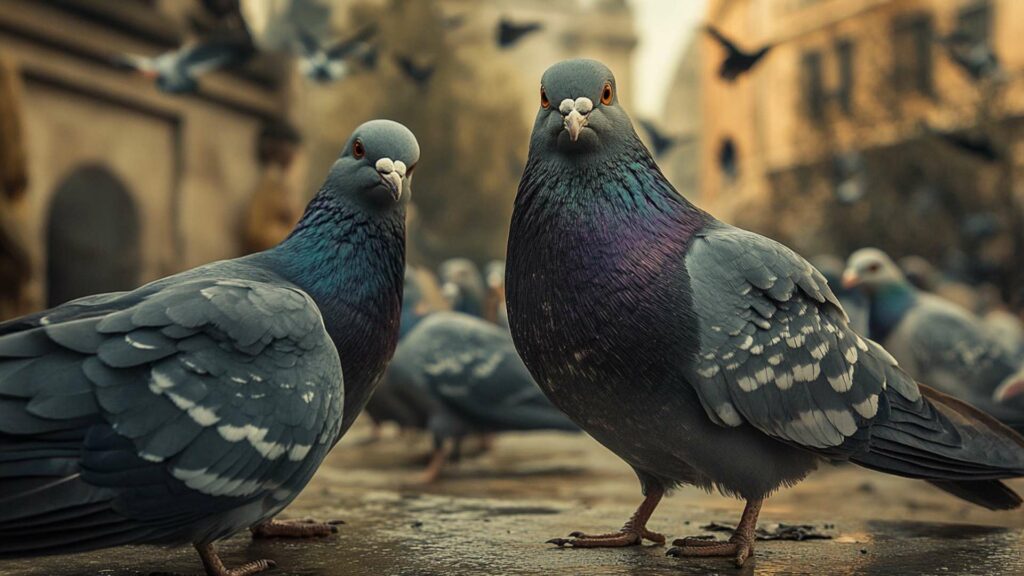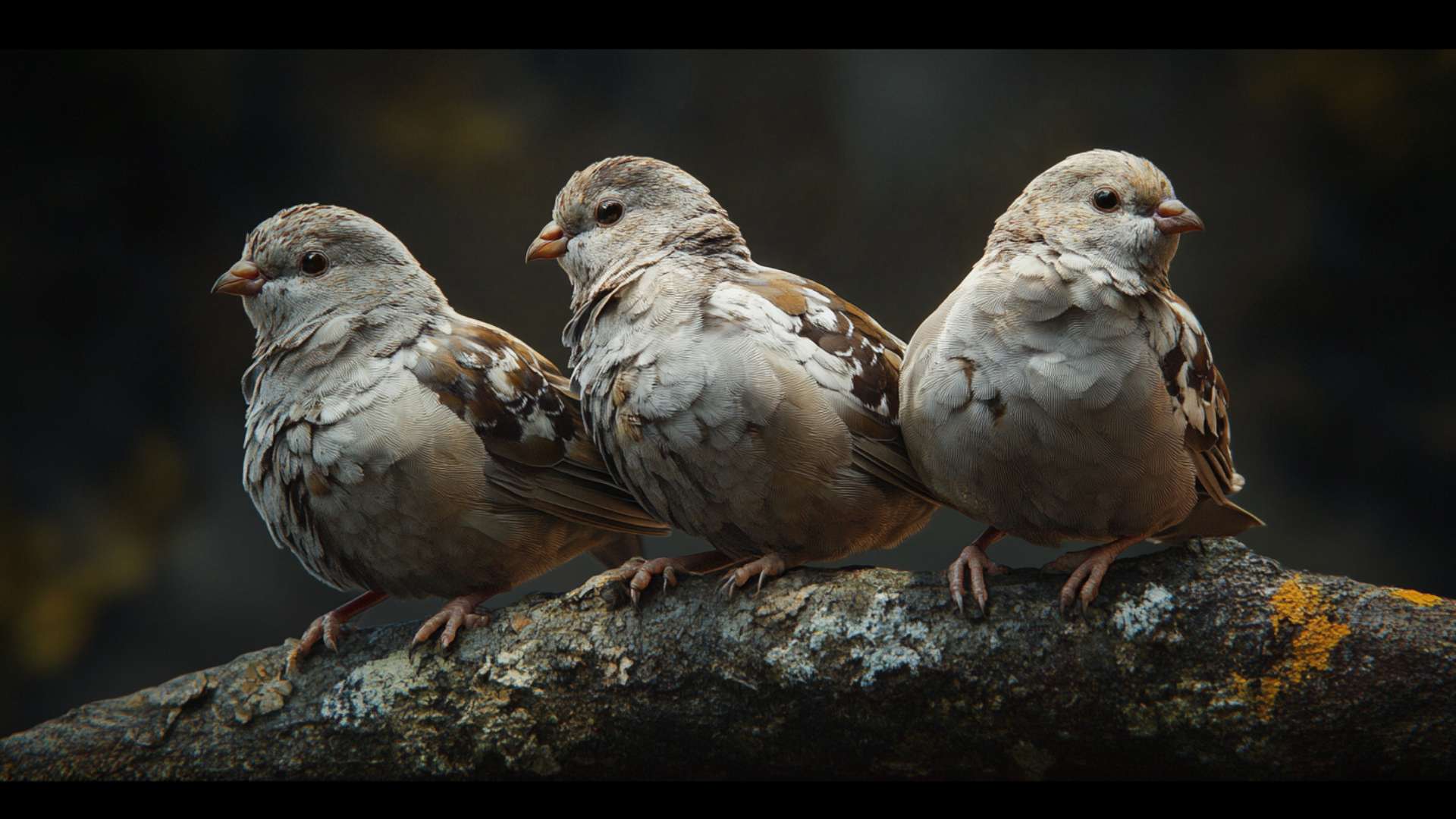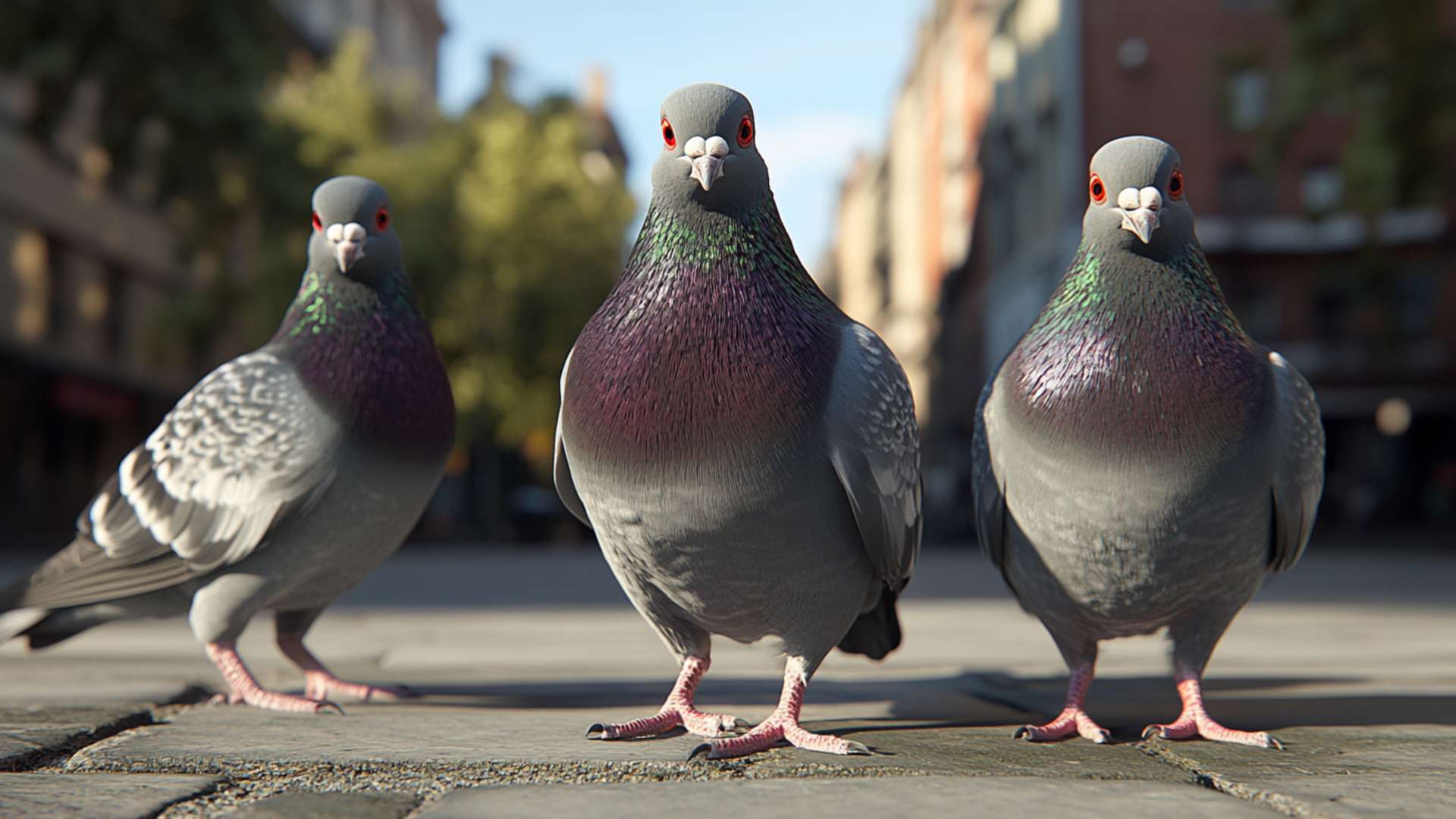Pigeons have long captivated human curiosity with their remarkable speed and ability to fly long distances. From ancient civilizations using pigeons as messengers to their role in World War II, these birds have been revered for their extraordinary flight capabilities. The question of how fast pigeons and the fastest birds can fly has intrigued scientists, pigeon enthusiasts, and even the general public.
One cannot help but be in awe of the velocities these birds can achieve. Pigeon flight speed is a topic that unfolds a myriad of astonishing facts about this humble creature.
The fastest pigeon species known is the Peregrine Falcon, which holds the title for being the fastest bird overall. However, when it comes to specific pigeon species that fly faster, like homing pigeons or racing pigeons, their speeds are equally impressive.
Pigeon racing is a popular sport that showcases the incredible speed and endurance of these birds. Participating pigeons undergo rigorous training regimes to enhance their natural flying abilities.
They are trained to navigate efficiently through different terrains and climates, covering impressive distances in record time. Understanding just how fast these birds can fly allows us to appreciate their prowess and admire them as athletes of the avian world.
Importance of Understanding Their Capabilities

Studying pigeon flight speed goes beyond mere fascination; it has practical implications as well. Understanding how fast pigeons can fly helps us comprehend their behavior patterns and adaptations that allow them to travel long distances without getting disoriented or fatigued. Homing pigeons are particularly intriguing due to their innate ability to find their way back home from distant locations.
By studying their flight speeds and navigational aptitude, researchers gain insights into avian migration patterns and navigation mechanisms employed by various bird species. Moreover, comprehending pigeon flight speeds aids in the field of avian research and conservation.
It allows scientists to evaluate the efficiency of different environmental and habitat management strategies. By understanding how fast pigeons can fly, we can better assess their capabilities to adapt to changing landscapes, identify potential barriers they may encounter during migration, and implement measures to protect them.
Overview of Pigeon Flight Speed

Average Cruising Speed: 50-60 mph
When it comes to the speed at which pigeons can soar through the sky, their average cruising speed is quite remarkable. These feathered aviators have an impressive flying ability, allowing them to reach speeds of an average speed of 50-60 mph during their flights. This speed is comparable to some cars on the road, and it’s truly astonishing considering the size of these birds.
Pigeon racers, in particular, are well aware of the pigeon’s speed capabilities. They train and breed pigeons specifically for racing purposes.
One notable breed among these racing pigeons is the German Elster Pigeon, known for its incredible speed and endurance. These pigeons fly faster and can easily maintain a steady pace of 50-60 mph over long distances without tiring.
Maximum Recorded Speed: 92 mph
While cruising at a decent pace may be impressive enough, pigeons are also capable of reaching even higher speeds when they put their wings into full gear. The maximum recorded speed for a pigeon stands at a mind-boggling 92 mph! This astonishing velocity was achieved by a Belgian Postal Pigeon named “Bolt,” aptly named due to its lightning-fast flight.
It’s important to note that various factors can influence a pigeon’s top speed, such as temperature and air pressure conditions as well as individual variations among several pigeon species or breeds. However, this exceptional feat demonstrates that these seemingly ordinary birds possess extraordinary abilities when it comes to zooming through the skies.
Overall, though precise measurements might not always be available for every pigeon species or individual bird out there, it is evident that these creatures have earned their reputation as some of nature’s fastest fliers. Whether they’re racing against each other other birds or simply trying to reach their home loft after a long journey, pigeons continue to astound with their impressive speed capabilities.
Factors Influencing Pigeon Flight Speed

Genetic Factors and Breed Variations
When we consider how fast pigeons can fly, it’s essential to understand that genetic factors and breed variations play a significant role. Different pigeon breeds have distinct characteristics that can impact their flight speed.
For instance, homing pigeons, known for their remarkable ability to find their way back home over vast distances, may not possess the same speed as racing pigeons bred specifically for speed competitions. Racing pigeons are meticulously bred for their swiftness and agility, with breeders focusing on selective breeding to enhance specific speed traits.
Through generations of careful selection, racing pigeon enthusiasts have managed to amplify their birds’ natural abilities. These breeders constantly evaluate the performance of individual birds and choose exceptional specimens as parents for future generations, thereby refining the overall speed capabilities of young pigeons in the breed.
Environmental Factors Affecting Flight Speed
Although genetics play a vital role in determining a pigeon’s flight speed, environmental factors also exert considerable influence. Weather conditions such as wind, temperature, and humidity can significantly impact how fast pigeons fly.
For instance average pigeons, however, headwinds can slow down their progress while tailwinds offer a boost. Temperature and air pressure also affect how high or low pigeons fly while in motion.
These factors impact air density differently at various altitudes. Pigeons are sensitive to changes in air density since it affects their wing efficiency and maneuverability during flight.
Understanding these environmental elements is crucial when considering the exact speeds at which pigeons fly past us or travel long distances across the sky. By accounting for these variables together with genetic factors and breed variations, we gain a deeper appreciation for just how remarkable these feathered creatures are in terms of aerial velocity.
Overall, it is this unique combination of genetics and environmental circumstances that determine how fast pigeons can fly and what velocities they can achieve. By comprehending these factors, we can better appreciate the incredible speed capabilities of different pigeon breeds and species.
Pigeon Racing and Speed Training Techniques

Role of Pigeon Racing in Pushing the Limits of Speed
Pigeon racing, a beloved sport, has played a pivotal role in pushing the limits of speed for these remarkable birds. It is within the realm of pigeon racing that enthusiasts and breeders have sought to unlock the full potential of their feathered companions. The competitive nature of pigeon racing serves as a catalyst for constant improvement, challenging breeders to enhance their pigeons’ physical and mental abilities to achieve incredible speeds.
Competitive Nature of Pigeon Racing
Pigeon races are thrilling events that capture the attention and excitement of both participants and spectators. These races demand strategy, navigation skills, and most importantly, speed. The allure of wood pigeons lies in witnessing these magnificent creatures take flight with unwavering determination towards the finish line.
Pigeons are released at predetermined locations, often hundreds or even thousands of miles away from their home lofts. The race becomes a test not only for speed but also endurance and navigational prowess.
Breeding Programs to Enhance Performance
Breeders have invested significant efforts into specialized breeding programs aimed at enhancing performance in pigeon racing. By selectively pairing pigeons with impressive flying abilities, breeders have managed to create exceptional lineages capable of achieving remarkable speeds. This practice involves careful consideration of various genetic factors such as wing shape, muscle structure, stamina levels, and even navigational instincts.
To produce offspring with superior flight capabilities and sustained average speed, breeders meticulously select parent pigeons known for their exceptional speed records or family lineage renowned for producing fast-flying progeny. Through generations of selective breeding programs spanning many years or even decades, these breeders have succeeded in creating pigeon bloodlines that consistently outperform others on race day.
Training Methods to Improve Flight Speed
Training methods for racing pigeons are designed to improve flight speed, endurance, and overall fitness. Careful conditioning and exercise routines are essential for developing the physical capabilities necessary to excel in the competitive world of pigeon racing.
Regular flying exercises are crucial to build endurance and strengthen wing muscles. Pigeons are often taken on practice flights over varying distances, gradually increasing the distances covered as their stamina improves.
These flights not only help develop muscle strength but also familiarize the birds with different terrains and weather conditions they may encounter during races. In addition to regular flying exercises, breeders incorporate strength training through wing flapping exercises.
This involves encouraging pigeons to flap their wings vigorously in short bursts, simulating intense periods of flight during a race. Such training sessions enhance the power and speed of wing beats, enabling pigeons to generate more thrust with each stroke.
Overall, pigeon racing has motivated breeders to refine their techniques continuously and push the boundaries of what was once considered possible. Through selective breeding programs and rigorous training methods, these dedicated individuals have helped cultivate a generation of pigeons capable of achieving incredible speeds on race day.
Pigeon Physiology and Adaptations for Flight Speed
Aerodynamic Features Aiding in Faster Flight
When it comes to flying speed, pigeons are a force to be reckoned with. Their aerodynamic design allows them to slice through the air with remarkable efficiency.
One key aspect of their flight prowess is their streamlined body shape, which minimizes air resistance and enables them to soar through the sky at incredible speeds. Additionally, pigeons possess a wingspan ratio that optimizes lift and reduces drag, further enhancing their ability to achieve high velocities.
Muscle Structure for Powerful Wing Beats
Pigeons have well-developed flight muscles that are crucial for generating the power needed for rapid wing beats. These muscles, located in their breast area, enable pigeons to flap their wings with great force and speed.
The robust nature of these muscles allows pigeons to maintain strong wing strokes over long distances without tiring easily. This extraordinary muscle structure of carrier pigeons is a testament to the physical prowess of these birds.
Respiratory System Adaptations for Efficient Oxygen Intake
To sustain their fast-paced flights, pigeons need an efficient respiratory system that can supply oxygen-rich air continuously. Pigeons boast large lungs and multiple air sacs distributed throughout their bodies, enabling them to maximize oxygen intake during flight. This enhanced respiratory capacity helps fuel the demanding energy requirements necessary for maintaining high speeds over extended periods of time.
These physiological adaptations contribute immensely to the incredible speeds at which pigeons fly. By combining streamlined body shapes, optimized wing spans, powerful wing muscles, and efficient respiratory systems, these birds have evolved into some of the fastest aviators in the animal kingdom.
Note: Pigeon racing enthusiasts often breed specific pigeon species or hybrids known for their exceptional flying capabilities in order to achieve even greater speeds during competitions. [Word Count: 296]
Famous Pigeons Known for Exceptional Speed Records
Champion racing pigeons with remarkable achievements
In the world of pigeon racing, there have been several extraordinary pigeons that have captured the imagination of enthusiasts. These champion racers have displayed remarkable speed and endurance fastest racing pigeon flight, making them true legends in their own right. With their impressive flying abilities, these pigeons have left a lasting impact on the sport.
“Bolt,” the fastest recorded pigeon
One name that stands out among all the pigeons that fly compared to others is “Bolt,” a pigeon renowned for its lightning-fast velocity. This magnificent bird earned its name by breaking records and leaving its competitors in awe.
Bolt’s incredible pigeon speed, has been documented at an astonishing 92 miles per hour, making it one of the fastest recorded pigeon velocities ever witnessed. Even though many pigeon racers strive for such exceptional speeds, only a select few ever come close to matching Bolt’s incredible pace.
Other notable record-breaking pigeons
While Bolt may hold the title for being the fastest recorded pigeon, there are other notable record-breakers in this avian realm. For instance, we have “Feathered Fury,” a homing pigeon with an impressive lineage of racing prowess.
Feathered Fury once soared through the sky at an astounding 88 miles per hour, solidifying its place among elite flyers. Another remarkable contender is the “Moscow Monk,” a breed known also as the Moscow Monk Pigeon and revered for its exceptional flight capabilities.
With swift wings that seem to defy gravity, Moscow Monk has achieved flying speeds of up to 85 miles per hour—a true testament to this species’ inherent swiftness. These pigeons’ remarkable achievements exemplify not only their inherent talent but also the dedication and skill put forth by their trainers and handlers who nurture and develop their racing abilities.
Conclusion
As we delve into the world of pigeon racing and explore the impressive flying abilities of these avian athletes, it becomes clear that pigeons possess a unique skill set that enables them to reach remarkable speeds. Whether it’s the legendary “Bolt” soaring at 92 miles per hour or other notable record-breaking pigeons like Feathered Fury and Moscow Monk, these birds push the boundaries of what was once thought possible.
In a world where technology often takes center stage, witnessing the raw power and speed of pigeons reminds us of nature’s own incredible creations. Pigeon racing allows us to appreciate not just their physical prowess but also the remarkable bond between human handlers and their feathered companions.
So, next time you spot a humble pigeon on a city rooftop or watch them swiftly fly past your window, take a moment to marvel at their incredible capabilities. They are not just ordinary birds; they are magnificent creatures capable of reaching unimaginable speeds—the true aerial champions of our world.
Prevent Pigeon Problems with D-Termination: Leading Pest Control in Las Vegas!

Are you grappling with pigeon-related concerns? Turn to D-Termination for assistance. Our team of specialists excels in deterring pigeons and reinstating cleanliness and order to your environment. Bid farewell to pigeons by selecting D-Termination for highly effective pest control today!
Reach out to us at 702-919-6310 or visit dtermination.com to arrange your pigeon control service and regain your space from these bothersome pests.
Frequently Asked Questions:
No, pigeons are not the fastest flying birds.
Pigeons can reach speeds of up to 92 miles per hour (148 kilometers per hour) in level flight.
The fastest recorded pigeon speed is approximately 92 miles per hour (148 kilometers per hour).
No, falcons are generally faster flyers than pigeons.








